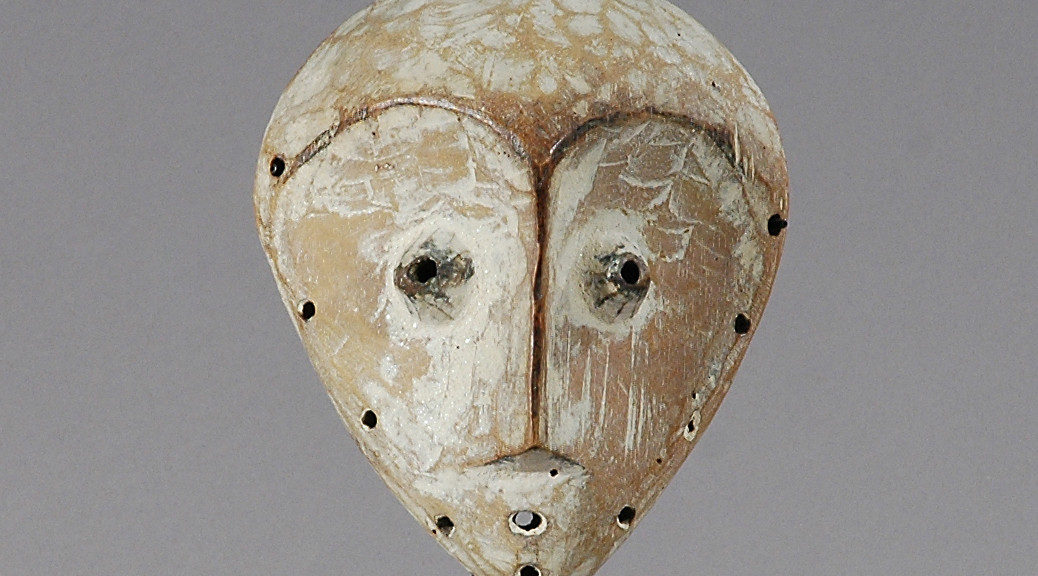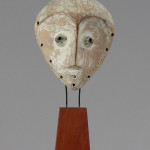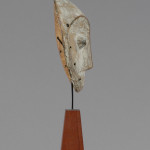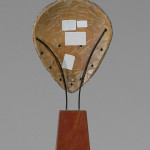LCK 702-13
Lega (Bwami) Mask, DR Congo
Wood, white pigments
H: 17,5 cm (6,9″), W: 14 cm (5,5″)
Lega mask (lukwakongo or idimu) like this one are used as initiation objects in the Bwami society. The Lega masks are divided into five types according to material, size, and form: lukwakongo, kayam-ba, idimu, muminia, and lukungu (Biebuyck 1973,164). They serve as an important mark of rank, identifying the owners as members of specific Bwami levels.
Unlike many masks in other African cultures, the masks of the Lega are not usually worn over the face, they are attached to the body, held in the hand or simply hung on fences during the initiation ceremonies of the Bwami society.
Lega artists create singular and astonishingly innovative forms while complying with strictly defined aesthetic codes. In order to emphasise this artistic diversity, the exhibition presents a great variety of works in a wide range of styles: headdresses in pangolin skin or ornamented with shells, leopard tooth necklaces, ivory spoons, cowrie shell belts, masks and figures sculpted in wood or ivory.
The Lega people live on the south-eastern edge of the tropical forests of central Africa, in the Democratic Republic of the Congo. In the second half of the the 19th century, the Lega and their neighbours were the victims of the slave and ivory trades taking place across the Indian Ocean. In 1885, the LeLLega were displaced into the Congo Free State, which became the Belgian Congo in 1908.
Age: Est. about 40- 60 years old
Provenance: Acquired from Tribal Art Gallery in Nairobi, Kenya in 2002
Click here for more information about the Lega people
Request price for Lega Mask




